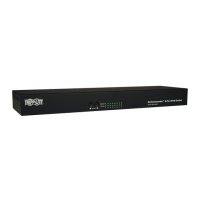
Do you have a question about the Tripp Lite NetCommander B072-016-1-IP and is the answer not in the manual?
| Ports quantity | 16 |
|---|---|
| Number of users | 2 user(s) |
| Maximum resolution | 1920 x 1080 pixels |
| Certification | UL 60950-1 (USA), CSA (Canada), FCC Part 15 Class A, CE IEC 60950-1 |
| Product color | Black |
| Rack capacity | 1U |
| Rack mounting | Yes |
| Cables included | Serial |
| Number of computers controlled | - |
| Built-in display | No |
| Sustainability certificates | RoHS |
| Package depth | 579.1 mm |
| Package width | 256.5 mm |
| Package height | 109.2 mm |
| Package weight | 2990 g |
| Country of origin | Taiwan |
| Master (outer) case width | 281.9 mm |
| Master (outer) case height | 243.8 mm |
| Master (outer) case length | 591.8 mm |
| Master (outer) case weight | 6760 g |
| Harmonized System (HS) code | 8471.80.1000 |
| Quantity per master (outer) case | 2 pc(s) |
| Master (outer) case GTIN (EAN/UPC) | 20037332141600 |
| Depth | 169.7 mm |
|---|---|
| Width | 482.6 mm |
| Height | 43.7 mm |
| Weight | 2130 g |
Warnings related to installing the KVM switch in a controlled indoor environment.
Warnings related to mounting the KVM switch securely within a rack.
Warnings regarding cable connections and distances for safe operation.
Warnings about user-serviceable parts and servicing procedures.
Identifies and explains the LEDs and buttons on the front panel of the KVM switch.
Identifies and explains the ports and switches on the back panel of the KVM switch.
Explains how to connect computers using SIUs and Cat5e cables.
Details how SIUs draw power and indicate connection status.
Step-by-step guide for connecting PS/2 computers via SIU.
Step-by-step guide for connecting USB computers via SIU.
Instructions for increasing server connectivity by linking multiple KVM switches.
Steps to access the KVM switch's web interface for configuration.
Describes the layout and main elements of the web interface upon login.
Explains the options available in the File menu of the web interface.
Details the Cascade and Maximize options within the Window menu.
Explains the About screen accessed via the Help menu.
How to set a unique name for the KVM device for network identification.
Setting the TCP port for inbound and outbound network communication.
Enabling or disabling DHCP for automatic or static IP address assignment.
Manual configuration of network addressing parameters.
Adding, editing, deleting, and blocking user accounts with Administrator/User roles.
Assigning unique names to each port for easier identification.
Defining which ports specific user accounts can access.
Configuring settings to block users after multiple failed login attempts.
Setting requirements for password complexity and strength.
Configuring automatic user disconnection after a period of inactivity.
Enabling SNMP traps for KVM access events and operations.
Specifying the SNMP server IP address and community string.
Procedure for upgrading the KVM's IP firmware via the web interface.
Steps to access the KVM in Safe Mode for recovery operations.
Resetting the KVM to its original factory default settings.
Performing firmware upgrade when KVM is inaccessible normally.
Resetting all settings and accounts, with option to preserve network settings.
Installing a custom SSL certificate for secure web access.
Detailed steps for accessing KVM via web browser, including Java installation.
Entering credentials and selecting access mode (Remote Access).
How the remote session screen appears and initial access.
How multiple users can share a remote session and transfer control.
Describes toolbar purpose, basic functions, and pinning.
Configuring display preferences, exclusivity, and pointer display.
Adjusting video quality and manually refreshing the remote display.
Manually adjusting brightness, contrast, offset, phase, and scale.
Adjusting color depth and bandwidth for optimal remote performance.
Using keyboard shortcuts and managing custom key sequences.
Recording and managing custom keyboard command sequences.
Synchronizing local and remote mouse pointers for accurate control.
Manually adjusting mouse settings for different OS and types.
Common issues and solutions for mouse pointer alignment and performance.
Switching between connected servers using the server list.
Toggling the remote session display between full screen and windowed mode.
Exiting the current remote session.
Using keyboard shortcuts to navigate between local console ports.
Using the OSD menu to view and select connected computers.
Accessing help information and key bindings within the OSD.
Accessing KVM config and user account management via OSD.
Automatically scanning through accessible ports at set intervals.
Adjusting video quality for distant connections on a port-by-port basis.
Repositioning port name labels within the OSD interface.
Updating monitor DDC information to resolve display mode issues.
Configuring local security, hotkeys, autoskip, serial port, and keyboard language.
Managing administrator, supervisor, and user accounts and their access privileges.
Customizing keyboard shortcuts for OSD access and port switching.
Editing port names, setting keyboard types, and configuring hotkeys.
Configuring scan intervals, label display times, and security timeouts.
Assigning Y, V, or N access rights to users for specific ports.
Editing account names, passwords, and types for users.
Specifications for the computer used for firmware upgrades.
Software needed for performing firmware updates.
Connecting the KVM to an upgrade computer via serial cable.
Checking existing firmware versions before performing an upgrade.
Displaying current firmware versions for KVM and SIUs.
Steps to install new firmware for the KVM and Server Interface Units.
Resolving communication errors encountered during firmware updates.
Steps to take if power is lost during a firmware update.
Troubleshooting issues where the connected computer display is not shown.
Lists key technical details like resolution, security, and connections.
Table detailing supported video resolutions and refresh rates.
Guidelines for storing the KVM switch to maintain its condition.
Procedures for obtaining service and warranty support from Tripp Lite.
Details the warranty coverage period and terms for Tripp Lite products.
Instructions for registering the product warranty online.
Information regarding the disposal and recycling of electronic equipment.
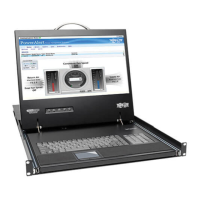
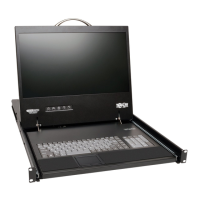
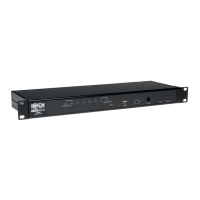
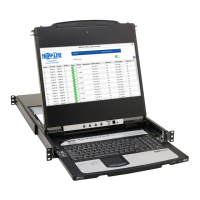
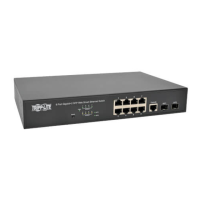
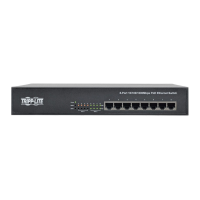
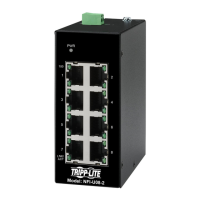
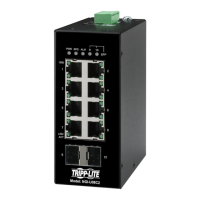
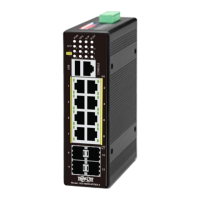
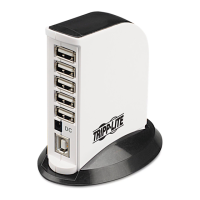
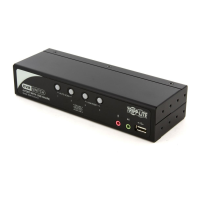
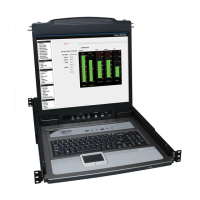
